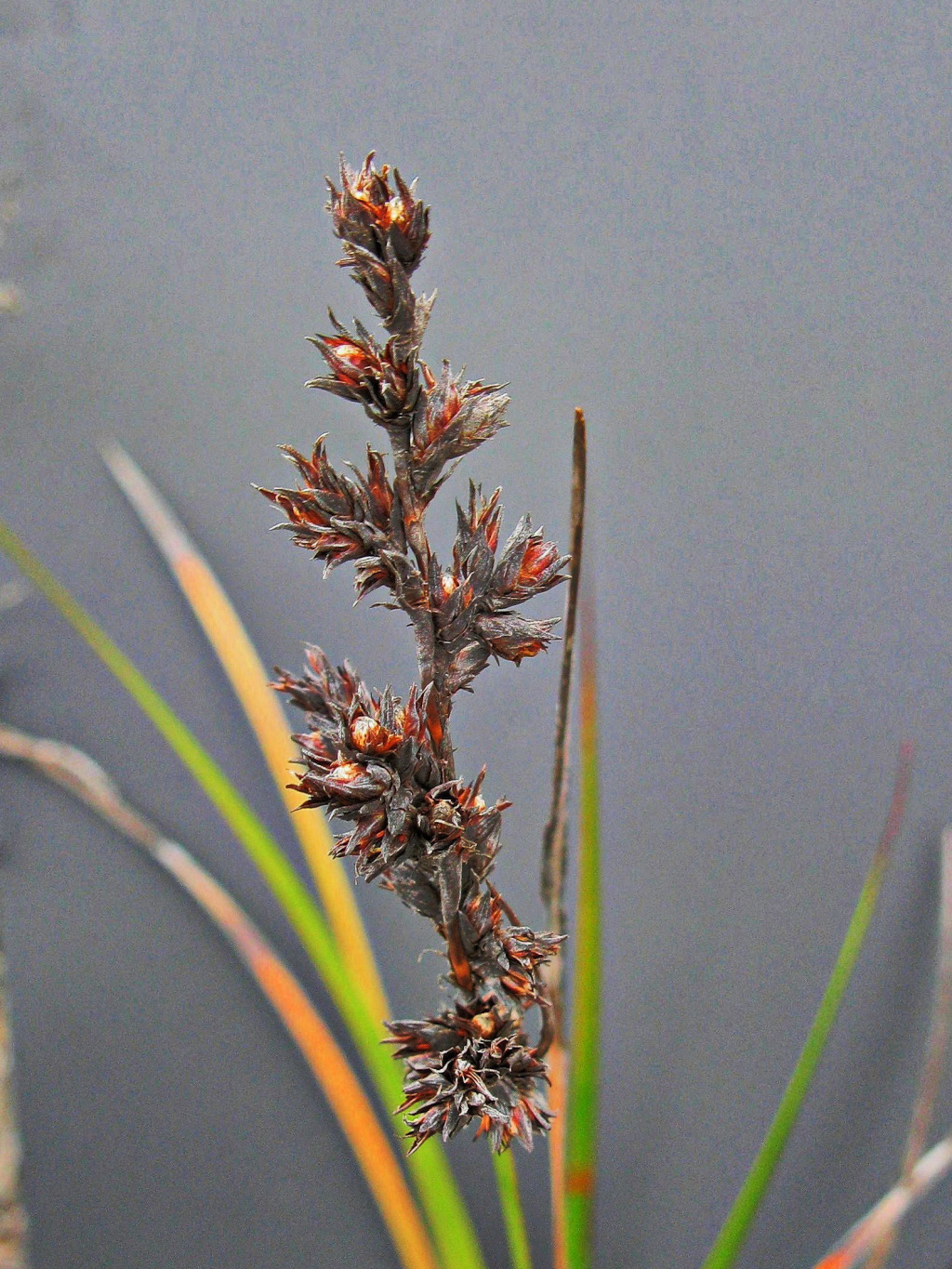Lepidosperma laeve
R.Br.Clump-forming perennial with short rhizome, or sometimes long-rhizomatous and forming extensive colonies. Culms rigid, erect, flat, or with 1 face convex and the other flat, rarely biconvex, ± striate, glabrous, smooth, 15–55 cm high, 2–4 mm wide; margins smooth, often yellowish or reddish. Leaf-blades usually slightly spreading such that each tuft is slightly fan-shaped, similar to culms in form but usually somewhat shorter, pungent, 1.5–4 mm wide; sheaths yellow-brown to dark brown, straw-coloured towards apex, occasionally slightly viscid. Inflorescence oblong to ovate in outline, erect, usually with several dense clusters with intervening rachis apparent, 3–12 cm long, 1–2 cm wide; main bract to about half the length of the inflorescence, ± pungent; involucral bracts subtending each cluster usually subequal to longer than the cluster, but often breaking by maturity. Spikelets usually numerous, 4–6 mm long; glumes 4–7, glabrous, puberulous or scaberulous, red-brown to blackish, the 2 or 3 lowest glumes empty, slightly shorter than fertile glumes, broad-acute to acute, mucronate; fertile glumes 3.5–4.5 mm long, acute to long-acute, often mucronate; hypogynous scales 6, whitish to yellowish, from one-quarter to one-half length of nut. Nut narrow-ellipsoid to ovoid, whitish to brown, smooth, shining, glabrous, 2.0–2.8 mm long (including hypogynous scales), 0.9–1.5 mm diam. Flowers spring.
LoM, MuM, Wim, GleP, VVP, GipP, OtP, WaP, GGr, DunT. Also SA. Occurs mostly on sandy soils of the south-west to Western Port, in woodlands and heaths, but extending inland in the west to the Big Desert. Common in the Grampians where often occurring in Red Gum woodlands where it may form extensive swards.
Formerly included in Lepidosperma congestum, but that species is now regarded as a South Australian endemic, occurring from the Eyre Peninsula to near Adelaide.
Lepidosperma hispidulum (recently segregated from L. congestum) is often coextensive with L. laeve in the western part of its range (e.g. Grampians, Little Desert), but is commoner further inland and rather rare near the coast (recorded from Lower Glenelg NP and Cape Nelson). L. hispidulum generally has broader, more spreading leaves and culms, a less interrupted inflorescence with inconspicuous bracts above the base of the inflorescence bract, and a larger nut that is minutely hispid at the apex.
Wilson, K.L. (1994). Cyperaceae. In: Walsh, N.G.; Entwisle, T.J., Flora of Victoria Vol. 2, Ferns and Allied Plants, Conifers and Monocotyledons, pp. 238–356. Inkata Press, Melbourne.
 Spinning
Spinning
